myFCT
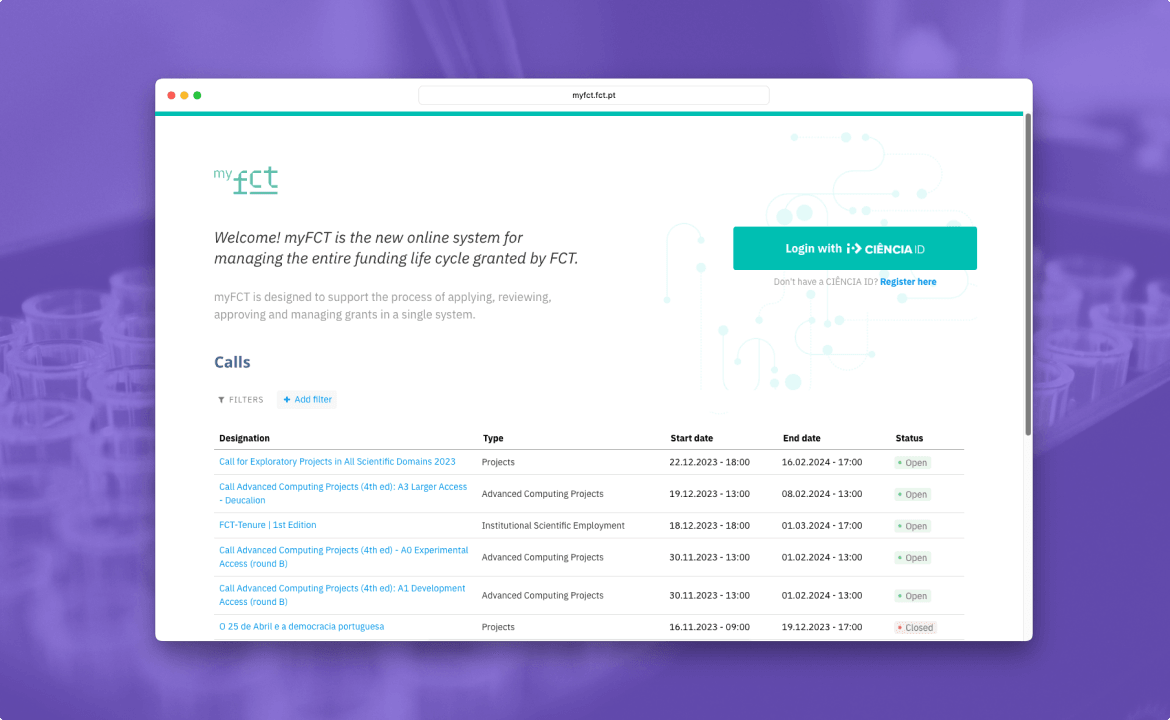
Overview
myFCT is the name given by the Fundação para a Ciência e a Tecnologia (FCT) — the Portuguese national public agency that supports research in science, technology and innovation — to the new grant management platform that aims to address the entire lifecycle of a grant in a unified, highly usable information system. This platform also enabled the phase-out of some legacy systems whose architecture, maintenance and interoperability had become costly and difficult due to the legacy technology stacks used.
A myriad of challenges
This project posed several challenges in multiple dimensions. From a technical perspective, the team had to find solutions that would allow to:
- Have a fast and highly productive application development philosophy with high integration capacity and relatively small teams;
- Simplify the infrastructure in terms of hardware, scalability and operations (i.e. cloud deployment);
- Achieve a more robust and secure application architecture.
The choice of OutSystems’ low-code development platform was therefore a logical one. It enables organizations to build, deploy, and manage enterprise-grade applications with minimal hand-coding and also offers features for collaboration, integration with other systems, and scalability, making it a popular choice for organizations looking to rapidly develop and deploy custom software solutions. Finally, it has a great ecosystem of technical partners in Portugal.
Business challenges
FCT identified a number of macro requirements that have guided the design and development of myFCT from the outset, namely:
- the unification and homogenization of concepts, processes and procedures that varied from one funding instrument to another (reflecting the complexity and heterogeneity of internal workings);
- Covering the entire lifecycle of a funding program, from application and evaluation to day-to-day management, in a single system;
- Integrate a number of ad hoc processes and workflows that were previously performed manually using disparate tools such as Excel or email.
Meeting these requirements has allowed us to retire a number of legacy platforms that no longer met our business needs and did not provide a good user experience for our users. As myFCT grows, it will be possible to eliminate other old legacy systems.
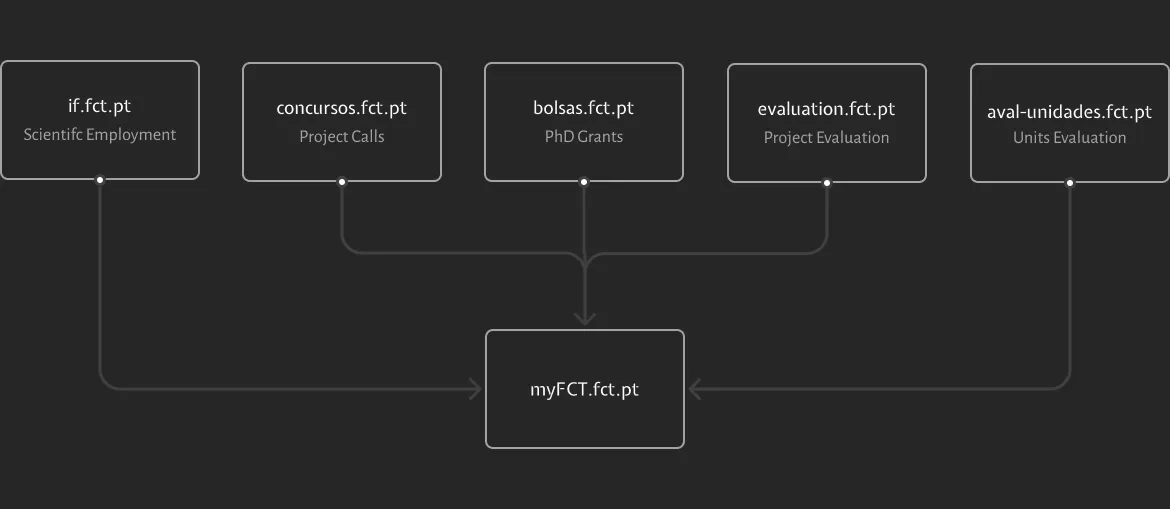
User research synthesis
The existence of a body of data resulting from various previous user research activities, such as interviews, questionnaires and usability tests, enabled me to carry out a useful synthesis.
This work helped me to have a very concrete idea of some of the users’ pain points and needs. Here are a few that I found relevant:
- As I’ve already mentioned, unifying the entire lifecycle of a grant in a single system reduces the need to access multiple systems at different times (whether pre-grant or post-grant);
- Eliminate, where possible, organizational complexity for the researcher, research team, or institution;
- Avoid multiple submissions of required documents;
- Integrate other existing information systems in the national S&T ecosystem (such as Ciência ID and Ciência Vitae) to speed up the application process.
- Simplify and improve the user experience when filling out application forms.
Developing solutions
A lot of my daily work on myFCT as UX designer is to collaborate with Business Analysts on translating a set of business goals, objectives and requirements into design elements. We work together on identifying the key tasks and user flows that will fulfill those requirements and creating task flows that outline the step-by-step processes users will go through to achieve specific goals. It’s a very iterative work that ensures that the proposed task flows align with business goals and are feasible within the given constraints.
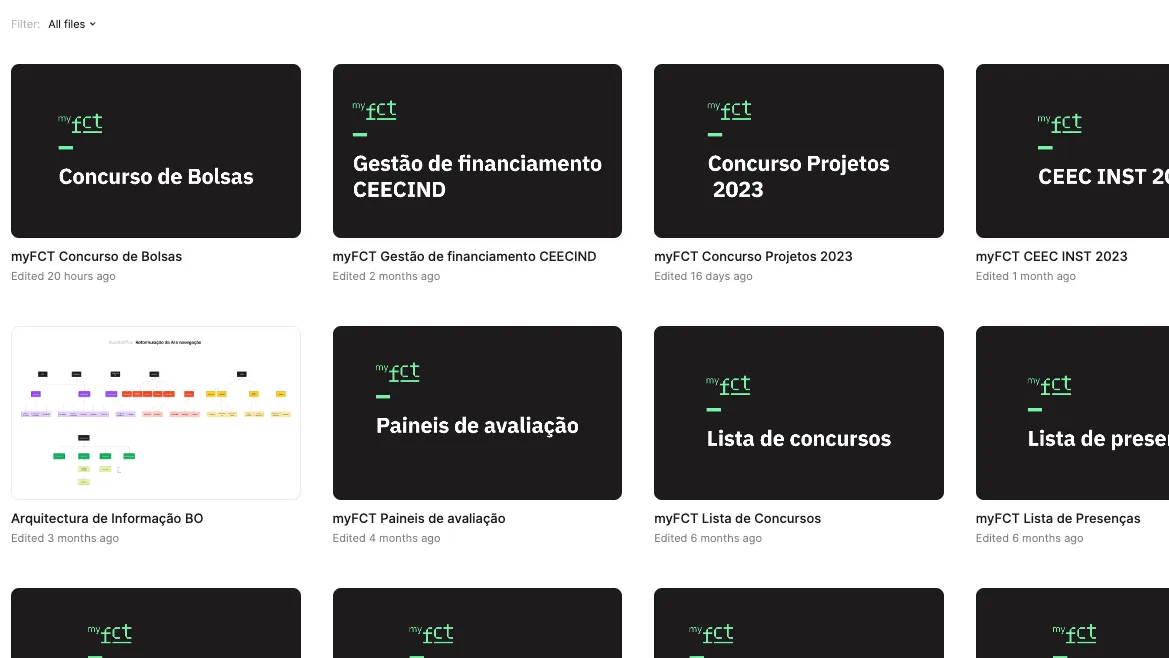
Most of interaction design work, either doing wireframes or prototyping is done in Figma. Prototypes are very useful to the entire team, including stakeholders, visualize how users will interact with various elements on the screen and testing task flows. Since my prototypes are high-fidelity it’s also very useful for testing the solutions with users and to guide the development teams.
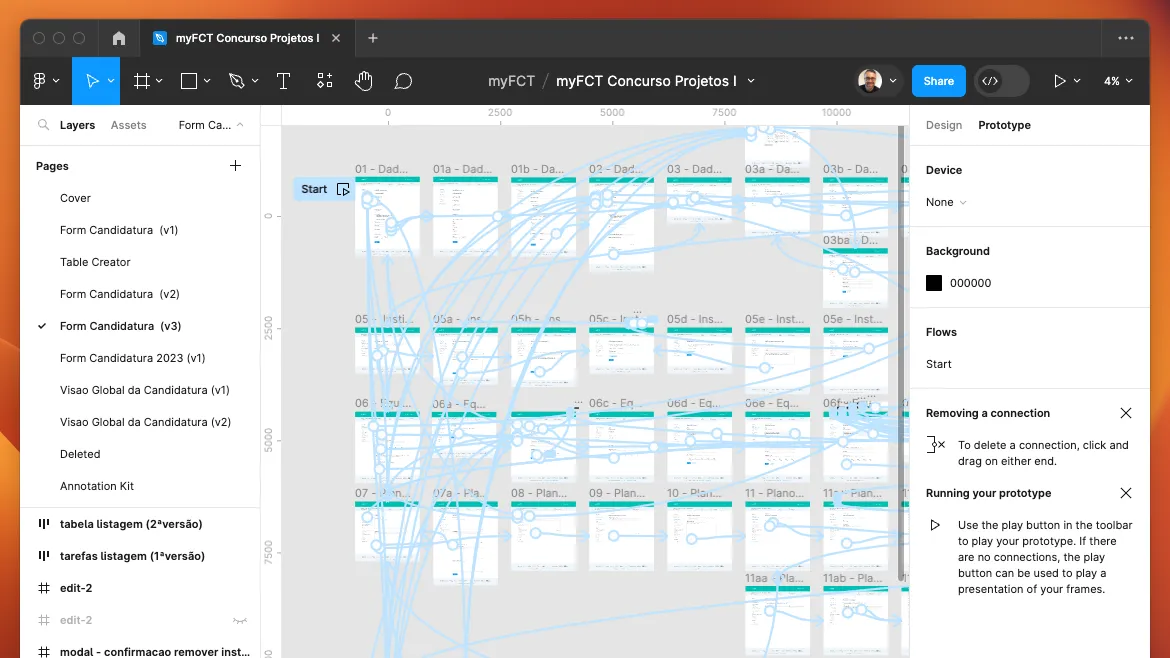
Delivery
From a UI Kit to a design system
In response to the challenges of being a solo UX designer, I took the initiative to develop a UI kit that played a pivotal role in streamlining my interaction design workflow. As a “UX team of one,” having a centralized library of commonly used components greatly accelerated the design process. This initial UI Kit laid the foundation for efficient design iteration, allowing me to quickly prototype and iterate on different screens.
Recognizing the need for a more comprehensive and organized approach, the UI Kit evolved into a second iteration that introduced a refined structure and incorporated essential elements of a design system. This iteration not only included a more complete set of components, but also integrated color schemes, typography, and layout options, providing a cohesive foundation for a consistent design language. While not a fully developed design system, the UI Kit v2 serves as a promising starting point, and I anticipate its continued evolution over time into a robust and adaptable design system that will prove valuable when working with external design teams.
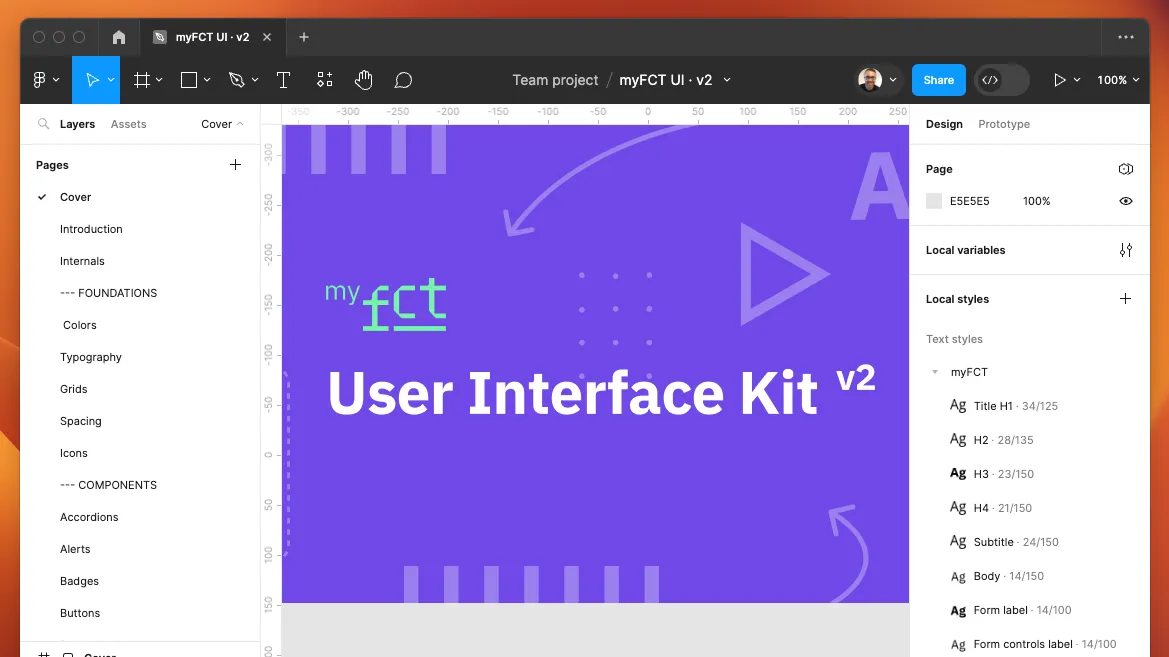
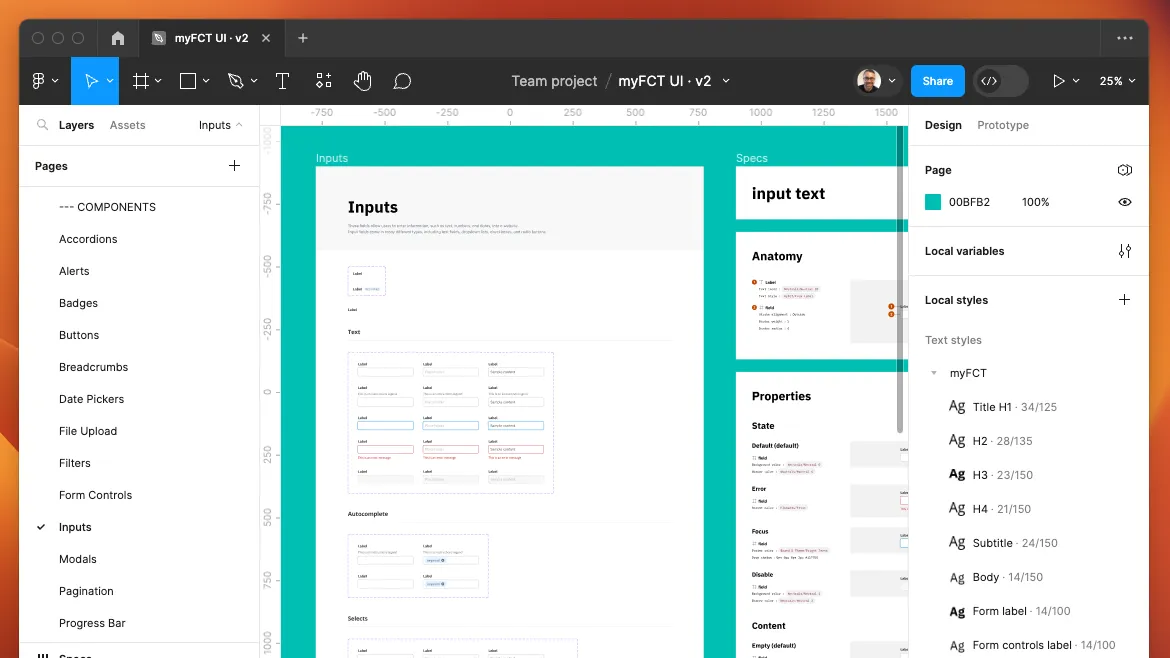
The UI kit — and to be fair, the wonderful new “dev mode” in Figma — also helps with the hand-off to the development teams, and I always try to review the final implementation in OutSystems to fix any possible bugs or misinterpretations.
Unfortunately, I feel that we should do more user testing - to be honest, the lack of time sometimes compromises user testing in some sprints. How do you unambiguously validate a design solution without user testing? Experience alone is not enough, but it’s important to understand that sometimes you have no choice but to compromise.
Outcomes
I am very proud of what we have achieved with this new generation information system and of being part of this team. Everyone has made a huge effort to add value and deliver a system that is truly useful, easier and more enjoyable to use for the Portuguese scientific and technological community. The feedback I have received has been encouraging: we know that our work can really make a difference in the daily lives of scientists.
Since we started this journey, if you’re a person who likes some quantitative indicators, myFCT has already achieved:
- 44 calls with 46,528 applications;
- 218,151 evaluations by 3,004 evaluators in 600 panel meetings.
And we’ve only just begun.